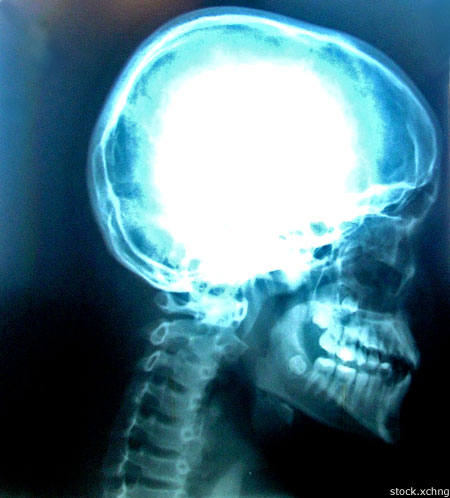Bone's Strength Found in Weird Structure Inside

Healthy bones have a highly irregular structure, according to a new study that used powerful microscopes to visualize bone structure down to billionths of a meter.
And the uneven structure of bone may actually be a good thing. It may help bone tolerate strains and stresses more easily and allow cells to sense and repair bone damage more quickly. It is also giving scientists ideas for how to develop better armor for soldiers.
Christine Ortiz, a materials scientist at MIT, and her colleagues used a tiny probe to extract a piece of cow shin bone--the structure of which is very similar to human bone-- and studied it using a powerful nanoscale microscope. To their surprise, the internal building blocks of the bone were organized very irregularly--in a way that drastically differed from their smooth surface appearance.
“I expected something relatively straightforward, that the patterns we would see would be correlated directly with the surface structure. But they’re not,” Ortiz told LiveScience. “They have very different, complex patterns.”
Ortiz and her colleagues then used special software to simulate how different types of bone structures would handle stresses and strains. These simulations, which produce contour maps similar to the ones geographers use, showed that bone’s irregular structure actually disperses strains over a larger area than a more regular structure does–-making bone more resistant to damage.
And Ortiz speculates that bone’s heterogeneous structure may also help it repair itself. As the stresses dissipate through the bone, they may help to alert nearby “repair cells” to potential damages, Ortiz said, allowing new cracks to be repaired before they spread.
The findings were detailed last week in the advance online edition of the journal Nature Materials.
Sign up for the Live Science daily newsletter now
Get the world’s most fascinating discoveries delivered straight to your inbox.
Ortiz’s research broadly focuses on developing new materials for soldiers to wear for protection during battle. With these new findings, she plans to play with simulation maps to determine which types of uneven structures best resist stress and strain and therefore would be ideally suited for protection.
The ability to probe bone structure on the nanoscale using the new technique could also allow doctors to diagnose bone-related disorders more easily.
“If specific nanoscale patterns of stiffness within bone structure are tied to disease or aging, these could potentially be identified earlier or provide more conclusive evidence of a disorder,” said Ortiz.
- 10 Things You Didn't Know About You
- Scientists Discover Healing Power of Bones
- Body Quiz 2: How the Parts Fit










